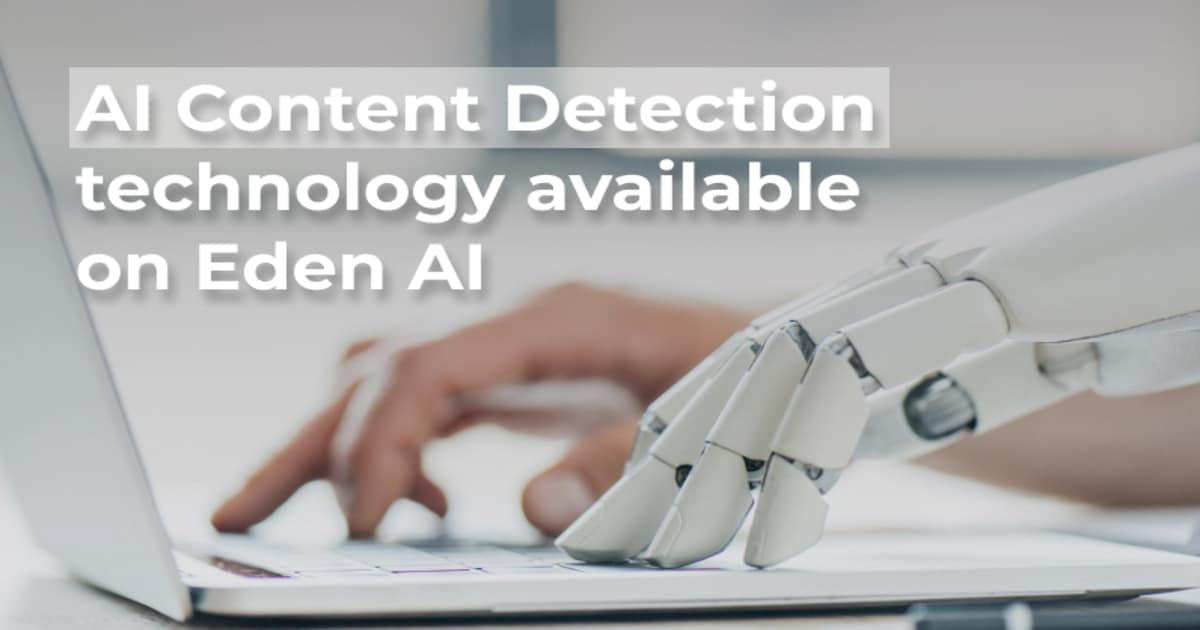AI content detection is here, and it’s making both teachers and students stop and think. This guide looks at what it really means to find text that was made by AI and how we should feel about it.

It all started with a gut sense.
You are reading a student’s essay, and something doesn’t seem right. The grammar? Perfect. What is structure? Right on. But what about the soul? Somehow not there. It’s like reading a synopsis of a textbook that forgot what it was attempting to say. No real messiness, no strong viewpoint, and no signs of trouble. Just… smoothness.
Then you realise, “Did a machine write this?”
Plagiarism used to mean taking someone else’s words and using them as your own. Students and writers can now write whole papers in minutes with AI tools like ChatGPT or Claude. There’s no need to copy. It still feels wrong, though. Or at the very least, hard.
AI content identification isn’t a flawless science, but it can help you find your way in this new, perplexing world.
What is AI content detection, and why is it important?
To be honest, when most of us first heard about AI writing tools, it seemed like something out of a sci-fi movie. The thought that you could enter in a prompt like “Write me a 1,000-word essay on the causes of World War II” and get anything that made sense? Wow. And scary.
AI content detection is the process of trying to find out if that is what happened. It’s a group of tools and methods that help you find text that was made by AI instead of a real person. But that definition still seems a touch stiff. It’s really more than that. It’s all about trust.
Teachers use writing projects not only to evaluate students, but also to get to know them, observe how they think, and keep track of their progress. When a student hands in work that they didn’t write, they have stolen something: not just grades, but also the relationship between the teacher and the student.
The problem changes a little with journalism and blogging. There, the worry is about being original and trustworthy. People who read anything expect (or hope) that the words they read are what a person thinks, not what an algorithm says. If that premise falls apart, a lot of people will lose faith in the government.
That’s why AI content detection is important. But not in the way we expected it would. It’s not so much about “gotcha” moments as it is about keeping the essential human parts of writing: thought, voice, and intention.
Why AI Content Detection Is Important in the Digital Age
Let’s make a picture.
It’s the middle of the night. You just started college and are two Red Bulls deep, looking at a blank Google Doc. The paper is due in eight hours. You kind of know what it’s about. But the words? They aren’t arriving.
Then you think of the AI technology your flatmate told you about.
You now have 800 words on “The Role of Social Media in Modern Democracy” in just 30 seconds. Yes, it’s general. But it’s okay. It’s finished.
Now picture yourself as the professor reading that paper.
They’ve been looking at your work in class all semester. They know how you fight. They know how hard it is for you to make changes. But this? This doesn’t sound like you. It doesn’t actually sound like anyone.
That’s when AI content detection is important—not because the professor wants to punish somebody, but because they want to know who really performed the work. The boundary between “help” and “replacement” gets blurrier every day in a world where everyone can use the same tools.
This isn’t just about school, though.
People in various fields, including publishers, clients, and hiring managers, are starting to ask the same question: Did a person write this? Or did they just make it happen? And if we can’t tell anymore, what does it mean for trust?
How AI tools for finding content work in real life
A lot of people think that AI detection is like a spell checker. You copy and paste the text, then click a button, and it tells you if it’s “AI” or “Human.” But that’s not real. The truth is more complicated.
Things like GPTZero or Originality. AI doesn’t “know” if something was written by AI. They run the text through a number of algorithms, look for patterns, and make guesses based on what they think is most likely. Some people look at how “predictable” the words are. Some people look at sentence variation, which they call “burstiness,” or the natural flow of human writing. Think about how we write when we’re weary.
One statement might go on and on. The following one is brief. Then we stop. Then we start talking about how our high school English instructor gave us a C+ for trying. That’s what burstiness is.
AI, on the other hand, usually writes in clean rows. Makes sense. Clean. Almost… too clean. Detection tools can see this. But they aren’t perfect. Because I cleaned it up too much, my own writing has been marked as “possibly AI-generated.” I’ve also seen AI-written things get past detection since they were meant to be sloppy.
The tools can help, but they don’t make the decisions.
They work best when utilised with common sense, context, and sometimes a good old-fashioned conversation: “Hey, how did you go about this assignment?” People say a lot when they have to explain their thoughts.

When and how to use AI content detection in the right way
Let’s get this straight: AI content detection isn’t a witch hunt. Or at least, it shouldn’t be.
To be honest, most people utilise AI technologies because they are stressed, under pressure, or just need to cheat. If you’re a teacher, editor, or manager who is considering about utilising a detection tool, it can be helpful to think about why you want to use it.
- Are you really interested in the writing?
- Did something seem off—not awful, but not quite human?
- Or do you verify everything as a general rule?
When your instinct tells you, “This doesn’t sound like them,” is the greatest time to employ AI content detection. It could be the tone, the words used, or even how the argument is put together. People have their own ways of talking that are different from AI’s.
After you check, don’t take the result too seriously. Don’t take the tool’s word for it if it says “80% likely to be AI.” Dig deeper.
Ask questions. Check out the drafts. Speak with the author.
Most of the time, the truth comes out not via data but through talking.
Ethical Issues with AI Content Detection
Let’s get to the point: these tools can be inaccurate.
There are false positives. People who write well or use academic language are often mistaken for AI. That’s a disturbing concept, especially for students who worked hard and are now being questioned.
That’s why you shouldn’t think of detection results as proof. They are hints. Indicators. That’s all. There’s also the issue of privacy. Some tools want you to provide them student essays or client content. What happens to that information after that? Is it kept, scanned, or used again? Are we keeping the folks we’re seeking to test safe?
Then there’s the problem of trust.
Students can stop being honest if they realise that their teachers are using detecting software to check everything. They might write in a style that doesn’t raise any red flags, but it won’t sound like their actual voice.
So how can we find a balance?
First, we need to be clear about when and why we’re employing these technologies. We get people involved in the process. And most importantly, we don’t make it a punishment; we make it a chance to think.
Finding a balance between AI content detection and human judgement
It’s a painful truth: no algorithm knows your student, employee, or writer better than you do. They can’t fake that you know a lot about their past work, have been in class with them, or gone over drafts with them. Not in a compelling way. You can trust your own judgement on who a tool is as a communicator, even if it says they have a high AI likelihood.
This is where human judgement is really important.
Let’s imagine a student turns in something that seems “too polished.” Before you make any assumptions, you could:
- Ask them how they learnt about the subject
- Ask for an outline or planning sheet
- Talk to them in person for a few minutes about their major points
You can usually obtain a good idea in 10 minutes.
They will either be able to show you how they do things or they won’t.
And what if they employed AI to aid but didn’t just copy? That’s a tough one. And like other grey areas, it needs more than just automatic punishments.
Using AI Content Detection to Help Write Ethically
Believe it or not, AI content detection can be used to teach as well as to catch.
Showing students how detectors function in writing workshops or digital literacy classes can be quite helpful. You can copy and paste two messages, one written by a person and one by an AI, and then ask, “What makes them different?” Students are now thinking like editors. They’re paying attention to tone, variety, and rhythm.
You can even make it a lesson:
- Have students write a paragraph by themselves.
- Have AI create the identical paragraph.
- Compare the two and think on what they mean.
The goal isn’t to scare students away from AI; it’s to help them grasp what it means to have a voice.
Writing is personal in the end. Even writing for school. Even writing about technology. And AI can’t copy the way genuine thoughts are messy, go off on tangents, and come up with new ideas. Those are people.

Using AI to Teach Students How to Use AI Ethically
We shouldn’t act like AI tools are going away.
They are here. Students use them for grammar, inspiration, and yes, sometimes to write the whole thing. The key is not to stop them. It’s to discuss about them.
Some colleges now have rules about how to use AI in their academic integrity policies. That’s a good beginning. But the most important thing is what happens in the classroom.
- What does it mean to use AI in an ethical way?
- Is it ethical to employ AI to come up with ideas? To check your grammar? To make drafts?
- Where do we draw the line?
You could even have students create two versions of an assignment, one with AI support and one without, and then compare the two. Which one feel more real? What did they learn more from?
When used with AI content detection, this method becomes quite useful—not as a way to spy, but as a way to be aware.
AI Content Detection for Editors and and Content Managers
When you’re at work, the queries become more businesslike.
If you’re an editor who gets dozens of submissions per week or a manager who hires freelancers, you need to know what’s real. Especially if you have to pay for something new.
AI content detection can help here, but again, it’s not a simple answer.
Some writers are open. They’ll say, “I used AI to write this, and then I rewrote it.” That’s okay, as long as the finished output sounds human and passes your tone tests. Some people might send in AI-written text without making any changes, and that’s when the quality starts to go down. Detection tools can find the ones that are easy to spot. But most of the time, your ears and sight reveal the genuine tale. Does the writing seem empty? Did you explain too much? Again and again?
Listen to your gut. Then utilise the tools to help your evaluation, not replace it.
The Future of Writing with Ethics and AI Content Detection
Things will get stranger in the future.
AI technologies are already getting better at copying how people write by adding mistakes, changing the tone, and even simulating “voice.” Detection tools will also improve. People are talking about putting invisible watermarks in AI-generated text so that it can be tracked. But we haven’t gotten there yet.
In other words, software won’t help us win the fight for ethical writing.
Conversations, rules, education, and trust will win it.
People that care about their voice will keep utilising it. Teachers who care about learning will keep asking tough questions. Editors who want to connect with people will keep looking for writers, not simply producers.
And in that murky middle ground, AI content detection will be only one of many tools. It won’t be the judge, jury, or executioner; instead, it will be a silent friend urging us to stay human. Using AI to Find Plagiarism and Keep Writing Honest
We’re at a weird crossroads.
Letting AI write for us is easy on one side. It’s quick. It’s tidy. It does the job. On the other hand, there’s the old approach, which is harder. Thinking about things. Struggling with words. Finding out what we really believe.
AI content detection won’t stop the world from evolving. But it can help us take a break. It can help us wonder, “Did someone write this?” And more significantly, “Should they have?”
A score, an app, or a red warning banner won’t tell you the solution. It will come from the way we talk to each other. The way we teach. How we read. How we write.
And maybe that’s the most human thing of all.
To stay updated on the latest AI developments and tool reviews, follow us on our social media channels:
- YouTube: https://youtube.com/@AItoolsbiz
- Twitter: https://x.com/AItoolsbiz
- LinkedIn: https://www.linkedin.com/in/aitoolsbiz







